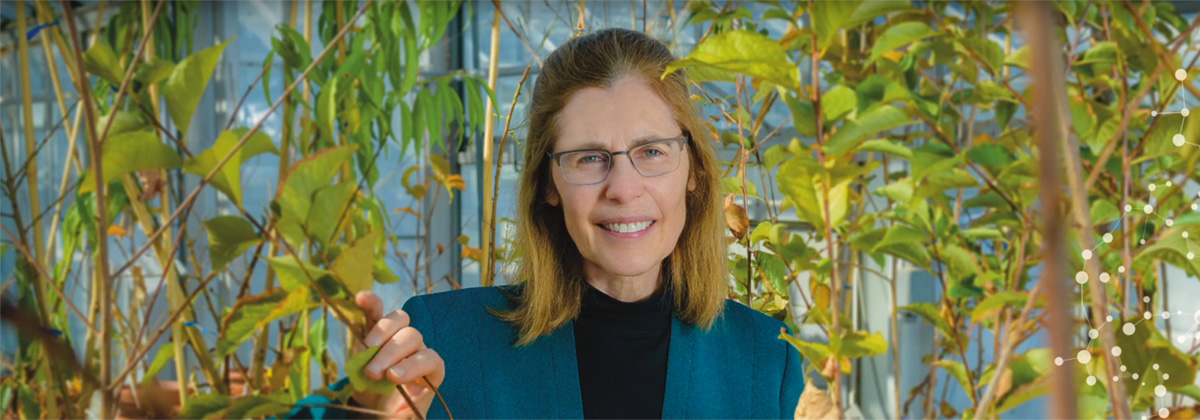It isn’t a reach to say that Amy Iezzoni is working to increase the profitability of cherry production. And with her research in cherry rootstock development, trees that are easier to harvest and that produce fruits years earlier than those with traditional rootstock is well within grasp.
Iezzoni, a professor in the department of horticulture and 2019 Innovator of the Year winner, has worked to develop cherry rootstocks that reduce the size of sweet cherry trees by 65-75%.
“I have always been interested in genetics and diversity of crop plants,” she said. “I began my career as a plant collector and literally got to travel to collect cherries in their natural habitats in Eastern Europe. My passion is using that natural diversity to breed new cherry varieties and rootstocks that have a positive impact on grower profitability and consumer enjoyment.”
Iezzoni’s research has transformed the smaller, precocious trees that traditionally take four to six years to flower and produce fruit into trees that now have a two-to three-year timeframe to production. MSU rootstocks are being tested in all major cherry production regions of the U.S. to determine scenarios that contribute to grower profitability.
The benefits also extend to workers during harvesting, as dwarf sweet cherry trees can be picked without ladders. This translates to reduced labor costs for producers.
For lovers of tart cherries, Iezzoni said there is interest in extending the adoption of her cherry rootstock to those trees. The result would be high-density systems that could be harvested in three years.
Iezzoni’s research also includes screening for Armillaria root rot, a fungus that leads to gradual tree loss and persists in soil even after a tree’s death. Armillaria root rot occurs naturally in the majority of the Great Lakes region and the U.S., affecting Great Lakes crops such as maple, oak, white pine, red pine, aspen, peach, cherry and potato.
MSU’s Innovation Center helped Iezzoni protect the rootstock releases and license the rootstocks nationally and internationally. Because rootstocks are below the surface and their benefits are seen in the upper part of a plant, they are harder to handle as intellectual property. Through the Innovation Center, a volume restriction strategy was formed that allowed the rootstocks to be commercialized but limited their use until testing is complete.


